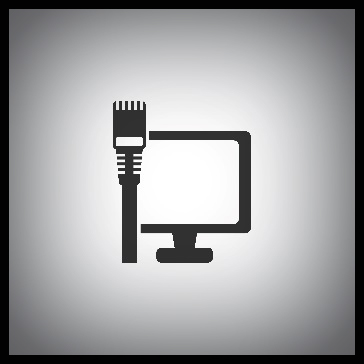“The Industrial Internet of Things”…when you hear that term, what do you think? Now, some of you might be thinking, “Not another IIoT article!” or maybe, “I don’t need IIoT” or perhaps there are still a few of you that are wondering, “What is IIoT?” Well, when you get past all the buzz that is surrounding the IIoT trend and break it down to the basics, you’ll see that most of you are already there or are pretty darn close.
The main components of the IIoT are simply data collection, data analysis, and remote access. Using these components together to improve your process and alleviate downtime, defects, and inefficiencies is the goal of IIoT. Not exactly a new concept, but one that has gained traction with the advances in communication, namely industrial Ethernet, data handling/storage and accessibility. So, how close are you to the IIoT? To answer that, let’s look at the three components of this “new” trend a little closer.
It All Starts Here…

First things first – we need data, and in industrial automation that means we need sensors. I’m sure many of you probably have sensors already installed that are being used to detect things like tank levels, oven temperatures and package counts. The raw data that sensors provide gives us a window into what our process is doing, how efficiently it is doing it and how it can be improved. Recent advances in sensor technology have brought about sensors that can not only measure system variables but can also process the data and monitor their own internal diagnostics. These “smart” sensors provide more data than your average sensor and often employ wireless communication.
Now it’s up to you to determine what kind of sensor and data you need and how it will be used, whether it’s used to determine power consumption, production run rates, imminent faults, etc. But regardless of what you choose, there are a lot of options when it comes to data logging and storage:
- Simple data loggers are a low cost solution to gather the desired data from your process.
- Many advanced PLCs today have on-board data logging capabilities. For instance, the Productivity2000 and Do-more! BRX PLCs can store up to 32GB of tag data locally on a removable microSD card. With the Productivity2000 you also have the option to transfer this data to a remote PC using an OPC server connection. The OPC communication standard allows data to be exchanged between devices without proprietary limitations. The OPC server acts as a liaison between multi-vendor products like PLCs, HMIs and data gathering software.
- HMIs can also provide data storage in the form of historical trends and alarm lists.
- For more robust data collection, SCADA systems are available to handle extremely large amounts of data with powerful trending, scripting, animations, and with connections to external databases.
For a closer look at how industrial controllers and HMIs are powering the IIoT, click here.
Say What?
Now that you have collected all of this informative data, how do you know what it’s saying? To decipher the data you first need to decide what benefits or solutions you are hoping to achieve and then focus your analysis around them. I’ll give you two examples:
 Predictive Maintenance: My first introduction to industrial automation was in the offshore oil processing field. Automation was used extensively to control tank levels and pressures, safety systems, control valves, etc. With the numerous valves present on these rigs, the operators needed a way to monitor valve performance and stay ahead of any failures that may occur. When you’re working in the oil industry, any type of shutdown of the process can cost huge amounts in lost production. To avoid any unexpected valve failures, whenever a command to close or open was given, the control system would record the time it took for the valve to complete its action. In other words, the time between the closed limit switch deactivating and the open limit switch activating and vice versa. This data was compiled over time and analyzed to determine which valves were sticking or in the process of failing. The analysis gave the operators a heads-up and allowed for the proper planning needed to replace the valve with minimal disruption to the drilling operation.
Predictive Maintenance: My first introduction to industrial automation was in the offshore oil processing field. Automation was used extensively to control tank levels and pressures, safety systems, control valves, etc. With the numerous valves present on these rigs, the operators needed a way to monitor valve performance and stay ahead of any failures that may occur. When you’re working in the oil industry, any type of shutdown of the process can cost huge amounts in lost production. To avoid any unexpected valve failures, whenever a command to close or open was given, the control system would record the time it took for the valve to complete its action. In other words, the time between the closed limit switch deactivating and the open limit switch activating and vice versa. This data was compiled over time and analyzed to determine which valves were sticking or in the process of failing. The analysis gave the operators a heads-up and allowed for the proper planning needed to replace the valve with minimal disruption to the drilling operation.
 Process improvement: This one comes from an application story that was featured in our PLC Handbook. It discusses how the Viking Range company is using AutomationDirect PLCs and the data gathered to improve their testing process. “DL06 PLCs measure temperatures of ranges, ovens, and cook tops under test. Thermocouples are attached to analog input cards. The PLCs are programmed to run repetitive cycles that turn units on for an hour then off for 15 minutes, for example. We log the monitored temperature data in Excel, with communications between each PLC and our three PCs via KEPDirect OPC software. OPC communications provides us with an easy way to transfer data using standard protocols. We quickly learned how to use the OPC/DDE server to collect data, and to write or modify macros in Excel to graph the collected data. Daily graphs show dips in the oven temperatures if there are issues or failures. This functionality allows us to run our tests continually, reducing total project testing time.” You can read the whole story here.
Process improvement: This one comes from an application story that was featured in our PLC Handbook. It discusses how the Viking Range company is using AutomationDirect PLCs and the data gathered to improve their testing process. “DL06 PLCs measure temperatures of ranges, ovens, and cook tops under test. Thermocouples are attached to analog input cards. The PLCs are programmed to run repetitive cycles that turn units on for an hour then off for 15 minutes, for example. We log the monitored temperature data in Excel, with communications between each PLC and our three PCs via KEPDirect OPC software. OPC communications provides us with an easy way to transfer data using standard protocols. We quickly learned how to use the OPC/DDE server to collect data, and to write or modify macros in Excel to graph the collected data. Daily graphs show dips in the oven temperatures if there are issues or failures. This functionality allows us to run our tests continually, reducing total project testing time.” You can read the whole story here.
So once you determine what your goal is with data collection, there are many ways to go about analyzing it. For example, simple historical trending can be done in your HMI, SCADA systems can calculate, store and retrieve numerous data points, and software applications like MATLAB or Excel can provide powerful algorithms. Also there are high-level systems, like the PI system, that specialize in industrial data collection and analysis over a broad range of data sources.
Curious as to how data collection is being used in our industry? Click this link for a recent survey.
Anywhere, Anytime
With the explosion of Ethernet in industrial automation many devices that were once isolated can now be connected to external locations. Although security is always a concern, the off-site monitoring and control of machines and processes has many advantages – quicker response time to failures, 24/7 accessibility, and direct contact with remote facilities to name a few. The built-in Web server functionality of many PLCs and HMIs allows anyone with Internet access and the proper security credentials to access real-time data. And some PLCs, like the Productivity2000, and HMIs, like the C-more HMI, have mobile apps available for remote monitoring and/or control on the go. Most SCADA and other data gathering systems allow remote and mobile access as well.
 But one aspect of the IIoT that is mentioned often is “the cloud”. Many articles focus on “cloud-computing” as an imperative part of any IIoT application. But what exactly is the cloud? Well, think about where your photos go when you back them up using Amazon’s Cloud Drive or any other cloud service. They are going somewhere and they are stored on something. Those photos can then be accessed by your device, anywhere in the world, at any time. In its simplest form, the cloud is a just a server or group of servers used to gather and store data. So when you think about it, a company server, a PI system, or even your SCADA system could easily act as your cloud drive. For instance, your SCADA system can collect and store all of your data and it can be accessed remotely through Web clients or mobile clients, anywhere in the world, at any time.
But one aspect of the IIoT that is mentioned often is “the cloud”. Many articles focus on “cloud-computing” as an imperative part of any IIoT application. But what exactly is the cloud? Well, think about where your photos go when you back them up using Amazon’s Cloud Drive or any other cloud service. They are going somewhere and they are stored on something. Those photos can then be accessed by your device, anywhere in the world, at any time. In its simplest form, the cloud is a just a server or group of servers used to gather and store data. So when you think about it, a company server, a PI system, or even your SCADA system could easily act as your cloud drive. For instance, your SCADA system can collect and store all of your data and it can be accessed remotely through Web clients or mobile clients, anywhere in the world, at any time.
To learn how imbedded HMIs are expanding the reach of remote visibility click here.
Who’s Behind The Curtain?
 Data collection and analysis is nothing new and for many, remote access isn’t either. And although IIoT seems to be getting a lot of attention, it is really Ethernet, the driving force behind IIoT, that takes all the credit. Ethernet has opened up the data already being collected and analyzed to many new possibilities. And as Ethernet becomes more accepted, new advances will arise just as it has with smart sensor technology. Deterministic Ethernet and Power Over Ethernet (POE) are two examples of advancements in industrial communication and some believe that 4-20mA and other analog signal wiring will one day be obsolete, replaced with a single Ethernet port. But for now if you are considering implementing an IIoT solution, don’t tear out what you have because you might be closer than you think….
Data collection and analysis is nothing new and for many, remote access isn’t either. And although IIoT seems to be getting a lot of attention, it is really Ethernet, the driving force behind IIoT, that takes all the credit. Ethernet has opened up the data already being collected and analyzed to many new possibilities. And as Ethernet becomes more accepted, new advances will arise just as it has with smart sensor technology. Deterministic Ethernet and Power Over Ethernet (POE) are two examples of advancements in industrial communication and some believe that 4-20mA and other analog signal wiring will one day be obsolete, replaced with a single Ethernet port. But for now if you are considering implementing an IIoT solution, don’t tear out what you have because you might be closer than you think….

